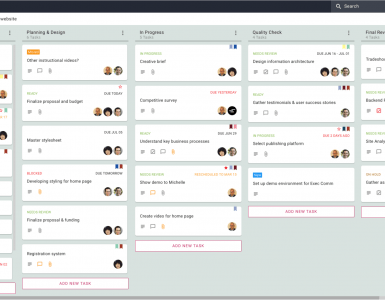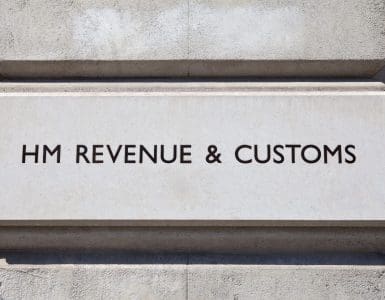Crowdfunding websites like Kickstarter and Indiegogo have given startups a fantastic new way to raise capital. The benefits are clear – you’re not giving up any equity, so it’s cheap money compared to VC or angel investment.
Plus, it gives you the chance to get your product validated by a real consumer audience. That said, crowdfunding shouldn’t be seen as the easy option – and that’s where our ultimate crowdfunding checklist comes in.
Crowdfunding isn’t just a matter of chucking a quick description onto Kickstarter and waiting for the money to start flooding in. You need a well-planned and executed campaign if you want to meet your goal.
And to do that, you’re also going to have to invest some money into your campaign upfront. Crowdfunding shouldn’t be seen as free money.
So what exactly are the boxes you need to tick off? In this article, we’ll talk you through all the stages of setting up and executing a crowdfunding campaign. This helpful crowdfunding checklist will talk you through setting goals, preparing content, creating buzz, and launching your campaign.
Let’s get started.
The Ultimate Crowdfunding Checklist
Planning your crowdfunding campaign goals
1. Decide on your investment goal
The first thing’s first on this crowdfunding checklist – deciding the amount you want to raise. This will have implications for all the decisions you make during your campaign.
One of the most important things to bear in mind at this stage is that a lot of crowdfunding sites will only release the money if you meet your goal. This means that more money isn’t always better. For instance, you could set a $50,000 goal, only to get to $48,000 and not see any of it. In many cases, it’s better to undershoot and if all goes well you might even exceed your goal.
Your goal will probably be different if this is just one part of your fundraising round. For example, if you’re also targeting venture capital, you won’t need to raise as much via crowdfunding. However, if crowdfunding is going to form your entire seed round, the amount will probably go up. You’ll also have more time to manage the campaign in this case, as you won’t be dividing your energy across different investment channels. However, for most startups there’s going to be a limit to how much you can raise through crowdfunding:

The table above says it all. Most successful Kickstarter campaigns have raised under $10,000. Just 3% of all successfully funded projects have broken the $100k mark. And just 0.2% have raised over a million. So don’t expect a miracle.
2. Don’t forget campaign expenses
It’s important to remember that crowdfunding campaigns don’t run themselves. The more you want to raise, the more expensive your campaign will probably be. This is because you’ll need to produce more content, promote it more aggressively, and just generally convince people your product is worth that level of investment. The stuff on this crowdfunding checklist won’t be free. These costs might include:
- Marketing costs: e.g, explainer videos, graphics, copywriting, PR, paid ads.
- Staff costs: will you need to hire someone to help run your campaign? Crowdfunding can be a lot of work, and it can be useful to get help with creative content and even routine admin tasks.
Marketing and staffing costs are a risk. Although you can reclaim them if your campaign is successful, if it’s not you won’t get that money back.
There are other costs you should take into consideration in the event your crowdfunding ends up a success. Try to incorporate these costs into your crowdfunding goal. Figure out the base figure you need to launch/design/manufacture your product or service, and then add these costs on top.
- Platform fees: If you host your campaign through an external site like Kickstarter or Indiegogo, you’ll have to pay commission on the final amount, plus any processing fees.

- Rewards: Most crowdfunding sites use a reward-based system for backers. If your project is successfully backed, you’ll need to provide unique rewards. These will probably range from a simple ‘thank you’ for small amounts, all the way up to exclusive gift packages for very generous backers. But before you start promising exciting rewards, make sure you’ll be able to afford them and that your target amount will cover costs like manufacturing and shipping these rewards. For the really high-end and expensive prizes, quantity limits can create buzz and reduce your costs.
Preparing your crowdfunding campaign
Most of the work for your crowdfunding campaign will be done before it sees the light of the day. In fact, you’ll find you’ve ticked most of the boxes on this crowdfunding checklist long before you hit that launch button. Here are some of the things you’ll need to sort out.
1. Streamlining your message
You need to streamline your message as much as possible, as this will provide the basis for all the marketing you do. Basically, you need your elevator pitch locked down. Your core message probably shouldn’t be more than 30 seconds and should cover things like:
- What problem are you solving?
- How are you solving that problem?
- How is your product revolutionary?
- What can it do for your target market? What are its benefits?
Successful crowdfunding is all about powerful, concise messaging. It’s about really knowing your story and communicating that as effectively as possible. There will be points you’ll expand further on this, but knowing the core message will really help you.
2. Get a video for your campaign
A strong video about your campaign can really improve your chances of success. Kickstarter recommends this:
There are few things more important to creating a quality Kickstarter project than a good pitch video, and skipping it will do a serious disservice to your project.
You’ll need a script and storyboard, and if it’s more complex, an animator or film producer to bring it to life. Your video should address these questions:
- Who are you? Why should you be trusted to deliver on your idea?
- What’s your story?
- What’s the problem you’re solving?
- What are the benefits of your product or service? How does it solve the problem?
- What will your backers get? Summarise the rewards.
This will be different from what you’d offer investors in a pitch deck. It needs to be engaging and exciting, with less focus on business strategy and more on the product itself and why it’s so exciting. It’s not quite an explainer video either – you’ll be addressing your backers directly, and explaining what they’ll get in return.
It’s also likely to be a bit longer – think five minutes, rather than 30-60 seconds. This means even if you have an existing explainer video, you’ll probably need something new for a crowdfunding campaign.
The Fidget Cube raised $6.4 million (from an original goal of just $15,000!) and their awesome video is well worth a watch if you need some inspiration.
3. Prepare your campaign copy
Along with the video, you’ll need some crowdfunding campaign copy to accompany it. This should be detailed and explain everything they need to know about your product and the campaign. This isn’t the place to leave questions unanswered.
However lengthy shouldn’t mean boring. It should still be a story, explaining your startup’s history and what you want to achieve with the money.
It’s a good idea to include subheadings so the copy is easy to scan if they’re looking for something specific.

4. Get professional graphics and photos
Professional photos of your product, along with polished graphic design work can really improve your campaign. Don’t neglect graphic design when you work through this crowdfunding checklist.

The Upright Go is a new device that helps you to correct your posture. This infographic on their Kickstarter campaign does a fantastic job of explaining the features of the device in simple terms.
This is just one of several similar graphics on their campaign page, and together with the polished copy they seriously help to sell the product.
5. Plan your marketing strategy
You want everything ready to go the moment you launch your crowdfunding campaign. This means you need to think ahead in terms of publicity. Have your social media posts scheduled and blog posts were written up ahead of time.
You’ll also want to get in touch with relevant influencers. If you can create a buzz before your campaign even starts, you’re one step ahead of the game.
The campaign launch
1. Soft launch
It’s often a good idea to have a soft launch before going public. This involves getting people to commit ahead of time to back your project. Often, it’s just a matter of getting friends and family on board and agreeing to donate. This means when your campaign does go live, you’ll have funds flooding in straight away.
Ideally, you want about 10-20% of your campaign funds secured pre-launch. This is advantageous because it gives you social proof. People who don’t know you are unlikely to want to be the first backers. But if they see you’ve already got a fair bit of support, it’ll feel less risky. Plus, if you get 20% you’re far more likely to be successful. Check out these stats from Kickstarter:
Funding on Kickstarter is all-or-nothing in more ways than one. While 14% of projects finished having never received a single pledge 78% of projects that raised more than 20% of their goal were successfully funded.
2. The actual launch
If you’ve got this all in place, the actual launch should feel like a breeze in comparison to the prep work you’ve done. This crowdfunding checklist should have you feeling well and truly ready.
That said, be prepared to be reactive. If you get lots of backers really quickly, make new content and contact them to say thank you.
Following up with media sources should be a priority at this stage too. You won’t have had replies from all the sources you contacted, so drop them a reminder email after the campaign goes live to let them know.
At this point, it’s really about maintaining momentum. If you’ve created a buzz, don’t let it fizzle out. Focus your efforts on keeping it going.
What next?
If you tick off all the boxes on this crowdfunding checklist, your chances of a successful campaign are maximized. You’ll still need a tiny bit of luck, but you’ve done all you can to make the best crowdfunding campaign possible.
If you want help preparing your campaign graphics or videos, remember you can always hire a creative on Twine. We vet every pitch to make sure you’re getting the best quality – so you know your campaign will be quality too!








